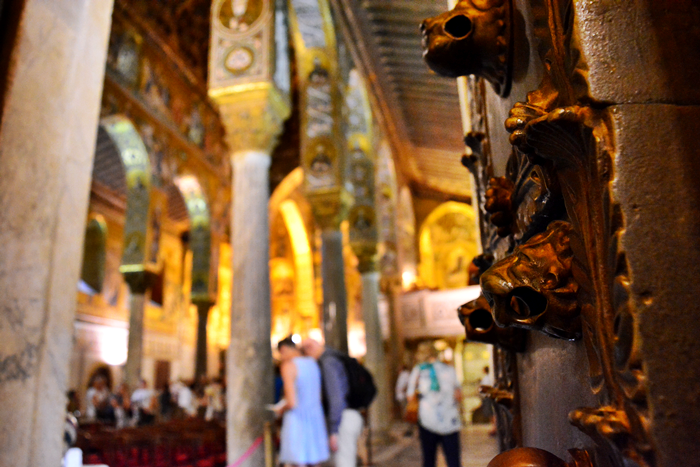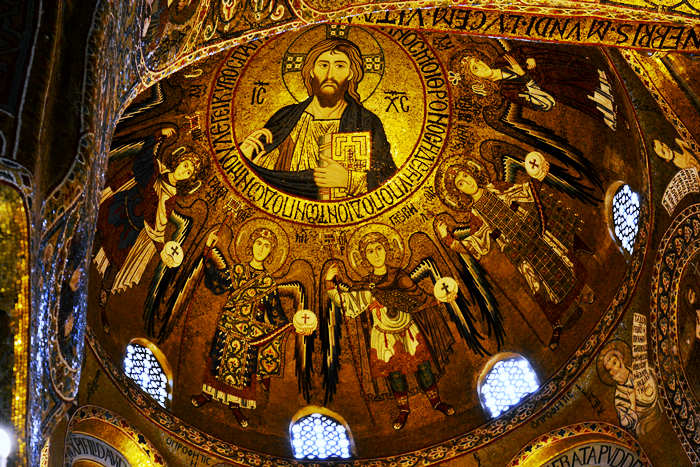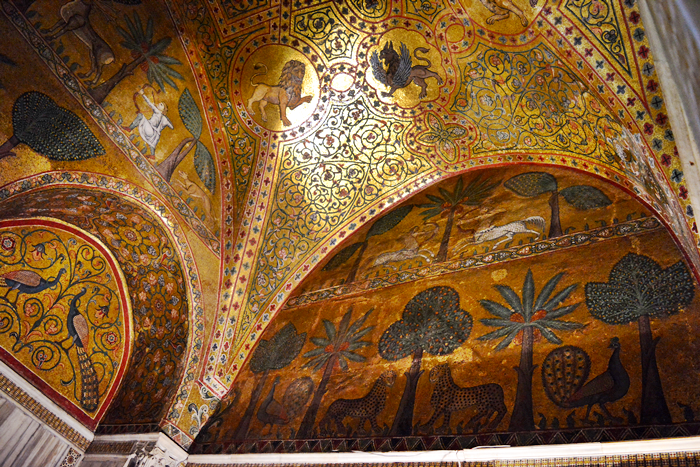The Palace of the Normans, but in particular the royal chapel (Capella Palatina), is a must-see during a visit of Palermo. After the conquest of Palermo by the Normans in the 11th century, they transformed the former arabian palace into their main residence. Not much is left from that era, but the chapel, which was built in the 12th century, is literally a jewel with its golden mosaics. The chapel is the best example for the norman-arab-byzantine culture, which also developed after the norman conquest and includes arabic and byzantine style from the former colonists. The light inside the chapel, which is created by the gold leaf covered mosaics, is really unique and you can't get enough of looking at all these biblical scenes in detail.
The palace was later extended by the spanish viceroys in the 17th century, who added renaissance elements like the Maqueda Courtyard. In the beginning of the 19th century the Bourbons then completed the palace and built/decorated some additional rooms and royal apartments, like the Hercules Room, which is nowadays used by the sicilian gouvernment or the Pompeii Room, which is my favorite next to the chapel, with its colourful neoclassical frescos.
Der Normannenpalast, aber speziell die Palastkapelle (Capella Palatina), ist meiner Meinung nach bei einem Besuch von Palermo ein Muss. Im 11. Jahrhundert bauten die Normannen einen früheren arabischen Palast, der bereits während des 9. Jahrhunderts entstanden war, um und zu ihrem Regierungssitz aus. Von dem Normannenpalast ist nicht mehr viel zu sehen, die Kapelle jedoch, die im 12. Jahrhundert errichtet wurde, ist durch ihre goldenen Mosaike ein echtes Schmuckstück. Sie ist im normannisch-arabisch-byzantinischem Stil gebaut, eine typische Kunstrichtung auf Sizilien, die nach der Eroberung der Normannen entstand und noch von den vorherigen Herrschaften der Araber und Byzantiner geprägt ist. Das goldene Licht, das durch die mit Blattgold verzierten Mosaike entsteht, ist wirklich einmalig und man kriegt gar nicht genug davon, sich die einzelnen biblischen Szenen im Detail anzuschauen.
Ende des 16. Jahrhunderts wurde der Palast durch die spanischen Vizekönige restauriert und es entstand u.a. der Innenhof im Renaissancestil. Während der Herrschaft der Bourbonen am Anfang des 19.Jahrhunderts wurde der Palast durch Königsgemächer komplettiert. Der Pompeii Saal, mit neoklassizistischen, farbenfrohen Fresken auf blauem Grund, gehört neben der Kapelle zu meinen Favoriten.
































































No comments:
Post a Comment